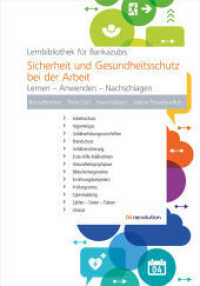- ホーム
- > 洋書
- > 英文書
- > Science / Mathematics
Full Description
mso-bidi-font-family: Calibri;">This book characterizes palaeochannels and their hydrological properties in the Western Bengal Delta (Damodar Fan Delta) to help understand palaeochannel development, with the goal of better informing sustainable water resource management in the world's largest delta.







